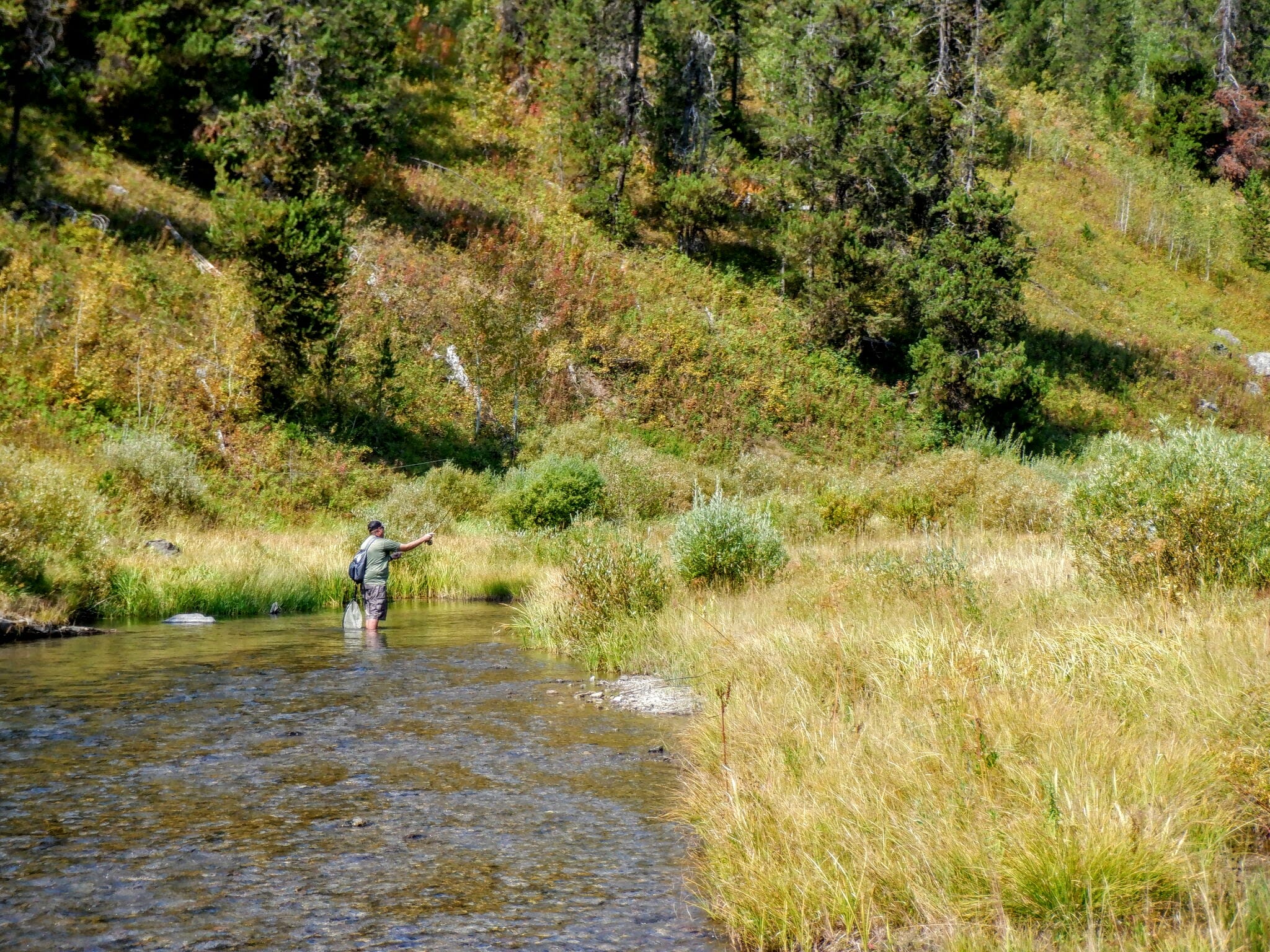An angler casts to trout on the Targhee National Forest in Idaho. Chris Hunt photo.
Agency says pandemic spurred more people to explore the outdoors
By Andrew Avitt
Over the last year, people across the U.S. chose the great outdoors to reduce stress and find a physically distanced alternative for having a little fun. National forests and grasslands were noticeably busier. Parking lots and trashcans were full; campsites booked; trails well-traveled; and, in gateway communities, business was good.
Up until recently, the increase in visitation to national forests and grasslands over the last year was only supported by these anecdotal observations at local campgrounds and trailheads. But new estimates, shown in the Forest Service’s National Visitor Use Monitoring report, quantify the uptick of interest in the great outdoors seen across the country.
During Fiscal Year 2020, national forests and grasslands received 168 million visits, an increase of 25 million total site visits and 18 million national forest visits from 2019. The report shows the more drastic visitation increases occurred during the last half of the fiscal year, starting around May, and continuing to October. The uptick has been attributed to the COVID-19 pandemic and Americans’ need for outdoor spaces.
Some recreation facilities saw decreases in visits such as downhill skiing facilities, campgrounds and visitor centers due to closures or restricted access related to the pandemic. Other recreation settings saw high double-digit increases.
Most of the visitation increases occurred in dispersed settings or places outside of developed camping areas. For example, the number of visits to wilderness areas and places with less development increased by an estimated 22.5 million visits, or about 25 percent.
For the last half of the reporting period (most of the summer months), visitation rates for these locations were more than 40 percent higher than in 2019. Additionally, visitation to Forest Service managed wilderness areas increased by more than 7 million, or more than 75 percent compared to the previous year.
The Forest Service’s National Visitor Use Monitoring program collects data, which then assists the Forest Service in making informed decisions on how to best serve the American public. Some of that data includes visitation frequency and duration, activity participation, demographics, satisfaction to identify trends, and visitor spending.
Dollars spent on or near national forests and grasslands supports the economies of rural towns and gateway communities. The collected economic data suggests the increased visitation served to bolster local economies otherwise negatively affected by the pandemic.
For the last half of the reporting period (most of the summer months), visitation rates for these locations were more than 40 percent higher than in 2019. Additionally, visitation to Forest Service managed wilderness areas increased by more than 7 million, or more than 75 percent compared to the previous year.
Overall, visitors spent $11 billion in fiscal year 2019 in areas around national forests and grasslands. That direct spending also ripples through the economy, creating further economic activity and jobs. In total, spending from national forest visitors contributes about $13.5 billion to the U.S. economy and sustains nearly 161,000 full- and part-time jobs.
While the increased visitation shows that more people are getting outdoors to enjoy their national forests, and that those visits help to directly support local economies, increased visitation has also brought unique challenges. Since the pandemic has limited in office staffing and services visitors are playing a larger role than ever before in sustainable recreation.
Do Your Part
There are a few best practices to keep in mind when recreating in the great outdoors. Overcrowding, along with limited staffing, has made it more challenging for us to keep up with trash and waste removal. So it is recommended whenever possible that you dispose of litter and waste when returning home, and not into overflowing receptacles.
You can also help to mitigate the negative effects of overcrowded recreation areas by having a backup plan. These days it is not uncommon for visitors to arrive at their intended destination to find that there are too many people. We recommend using our Interactive Visitor Map to develop an alternative plan for when a recreation site is too crowded.
Looking ahead, the Forest Service will use this survey data to more efficiently plan how to meet our objectives to support the increased visitation while simultaneously ensuring quality recreation experiences.
Andrew Avitt works in the communications office for the U.S. Forest Service.



